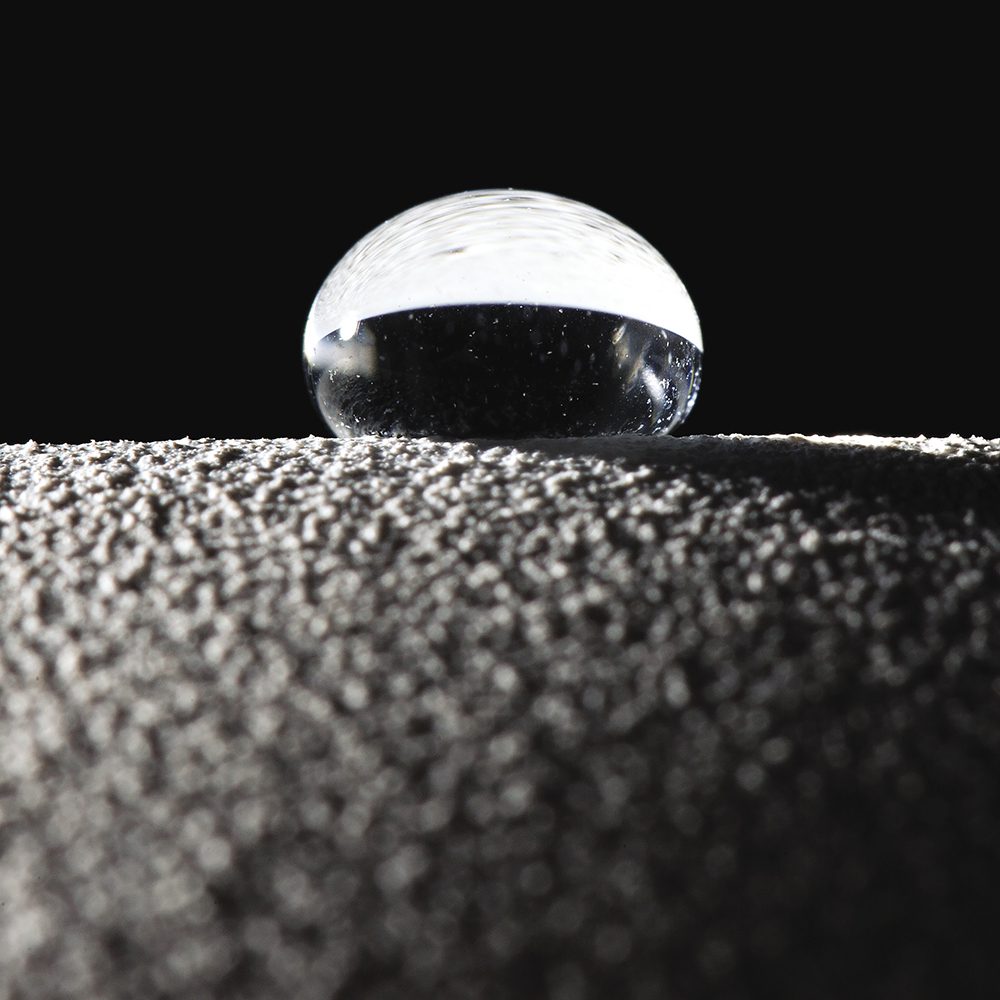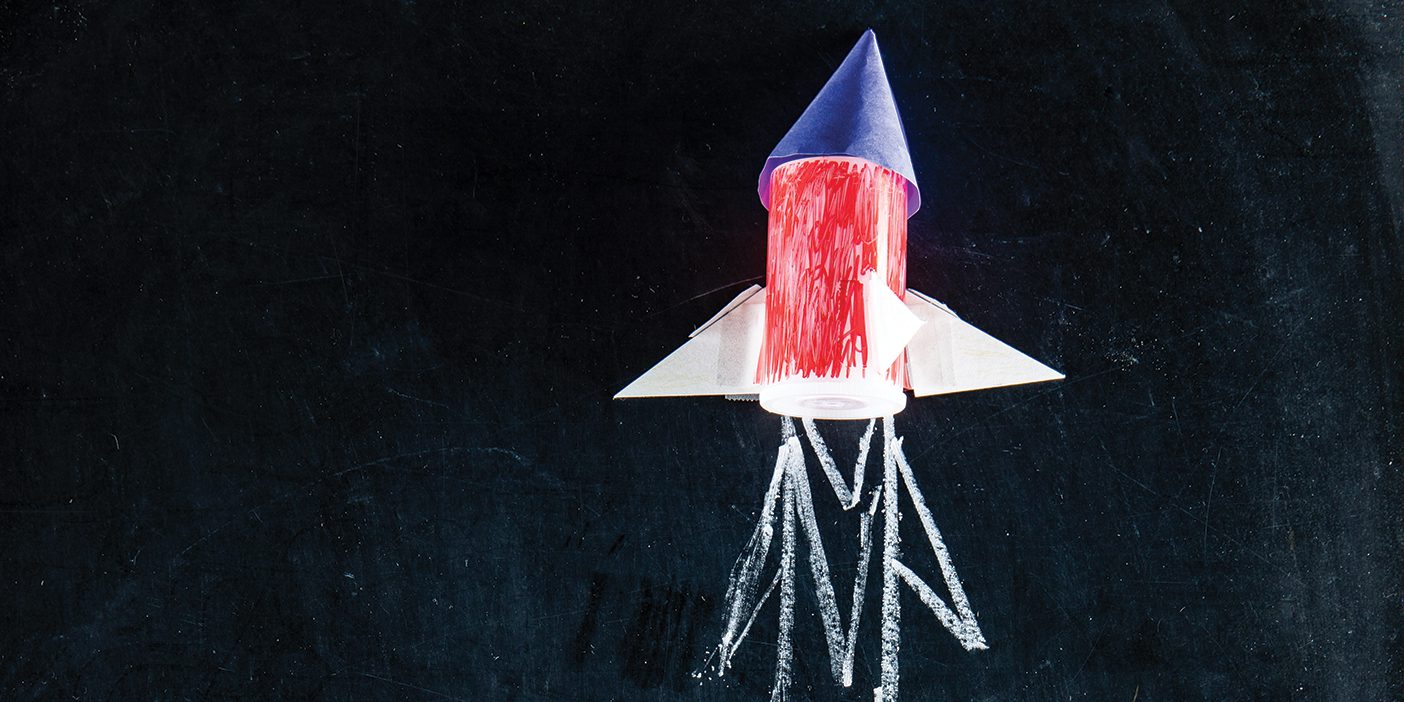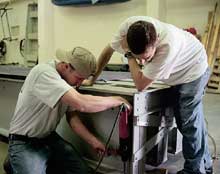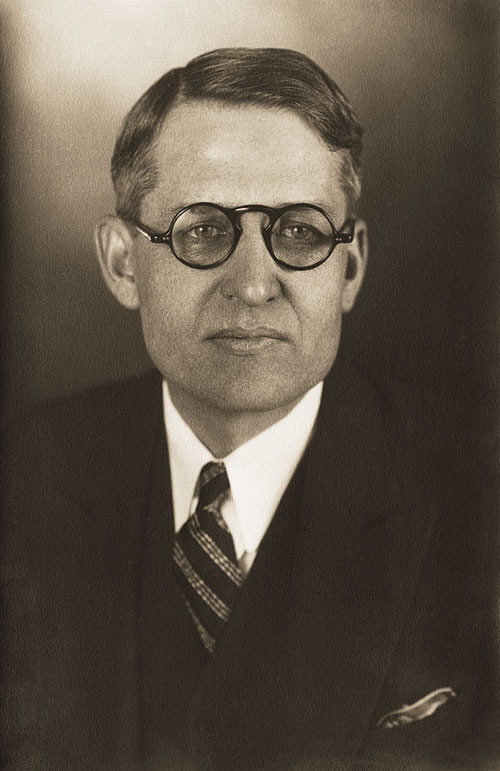
Etching surfaces with microscopic ribs, cavities, and posts, BYU researchers have discovered how to create super-waterproof materials. (Photo by Jaren Wilkey)
We’ve all seen water bead up on a shower wall—and later had to scrub off the hard-water spots. BYU engineering research could someday make those drops bounce right off of shower walls and countless other surfaces.
Engraving CD-sized wafers with either microscopic ribs or posts and then applying a water-resistant film, mechanical engineering professors Julie Crockett and Daniel Maynes have developed surfaces that are super-hydrophobic, or so waterproof that drops immediately pull into a ball and roll away.
“Our research is geared toward helping to create the ideal super-hydrophobic surface,” Crockett says. Potential applications are abundant: solar panels that don’t get dirty from rain; ships, torpedoes, and subs with greatly reduced water drag; airplane wings that resist icing up in cold, humid conditions; more efficient steam turbines—the list goes on.
For now the team is studying how alterations in the etching angles and spacing affect water behavior. “By characterizing the specific properties of these different surfaces,” says Crockett, “we can better pinpoint which types of surfaces are most advantageous for each application.”
See water bounce at more.byu.edu/hydrophobic.









